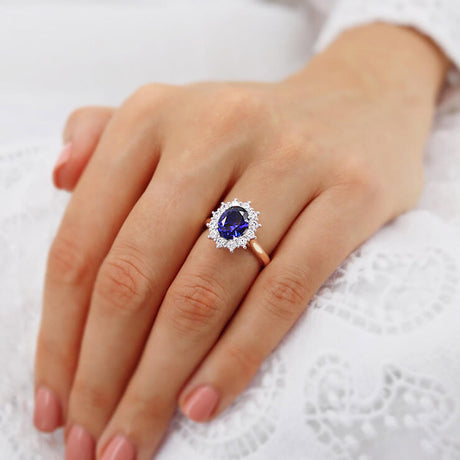The history and opulence surrounding the French royal engagement ring are a fascinating topic for gemologists, historians, and jewelry enthusiasts alike. This exquisite engagement ring, often steeped in royal symbolism and craftsmanship, is not only a precious piece of jewelry but also an important artifact that reflects the cultural and historical significance of its time. The authentication of this magnificent engagement ring has become increasingly vital in the modern era, where forgeries and replicas can easily deceive the untrained eye. In this article, we will explore the technological tools that have emerged to aid in the authentication of French royal engagement rings, ensuring that its legacy continues to shine brightly in the world of fine jewelry.

The Historical Context
French royal engagement rings have a storied past, often associated with significant historical figures such as Marie Antoinette and Louis XVI. These rings were not merely tokens of love; they represented political alliances, family heritage, and national pride. As such, the rings were crafted using exquisite materials, including diamonds, sapphires, and rubies, and often featured intricate designs that conveyed their royal status. Understanding the historical context of these rings is essential for their authentication. However, with the passage of time and the natural degradation of materials, it can be challenging to distinguish authentic pieces from later imitations.
The Role of Gemological Analysis
One of the primary technological tools used in the authentication of engagement rings is gemological analysis. This scientific examination involves evaluating the physical and optical properties of the stones and materials used in the rings. Gemologists employ tools such as microscopes, spectrometers, and refractometers to analyze the gemstones’ refractive index, inclusions, and overall quality. For example, natural diamonds possess specific inclusions that can help gemologists determine their authenticity. In contrast, synthetic or imitation stones will show different characteristics that can easily be identified under scrutiny.
Advanced Imaging Techniques
In addition to gemological analysis, advanced imaging techniques have revolutionized the field of jewelry authentication. High-resolution imaging allows experts to capture detailed images of the ring’s craftsmanship and the individual gemstones. Techniques like infrared spectroscopy and X-ray fluorescence can reveal the chemical composition of the materials, helping to identify whether they are consistent with what would have been available during the ring’s period of origin. These methods can also detect any alterations or restorations that may have taken place over the years, providing a more comprehensive understanding of the ring’s history.
3D Scanning and Printing
The rise of 3D scanning technology has also proven beneficial in the authentication process. By creating a digital replica of the engagement ring, experts can compare it to existing records and databases of known authentic pieces. This technology not only aids in authentication but also helps in preserving the ring’s details for future study and reference. Furthermore, 3D printing allows for the creation of accurate replicas for display purposes, reducing the need to handle the original piece and potentially causing damage.
Blockchain Technology
Blockchain technology is another innovative tool being used in the authentication of valuable items, including engagement rings. This decentralized digital ledger can securely record the history of an item, providing a transparent and immutable record of ownership, provenance, and authentication. By registering each ring on a blockchain, future owners can easily verify its authenticity, reducing the risk of fraud and enhancing its value in the marketplace. This technology holds great promise for the jewelry industry as a whole, helping to ensure that pieces are genuine and traceable back to their original creators.
Conclusion
The authentication of French royal engagement rings has become an intricate process, enhanced by the advancement of technological tools. Through gemological analysis, advanced imaging techniques, 3D scanning, and blockchain technology, experts can now confidently assess the authenticity of these historically significant pieces. As the demand for royal jewelry continues to grow, so does the importance of utilizing these technological advancements to protect and preserve the legacy of French royal engagement rings. Understanding and employing these tools not only enriches our knowledge of these exquisite artifacts but also honors the craftsmanship and history they represent.